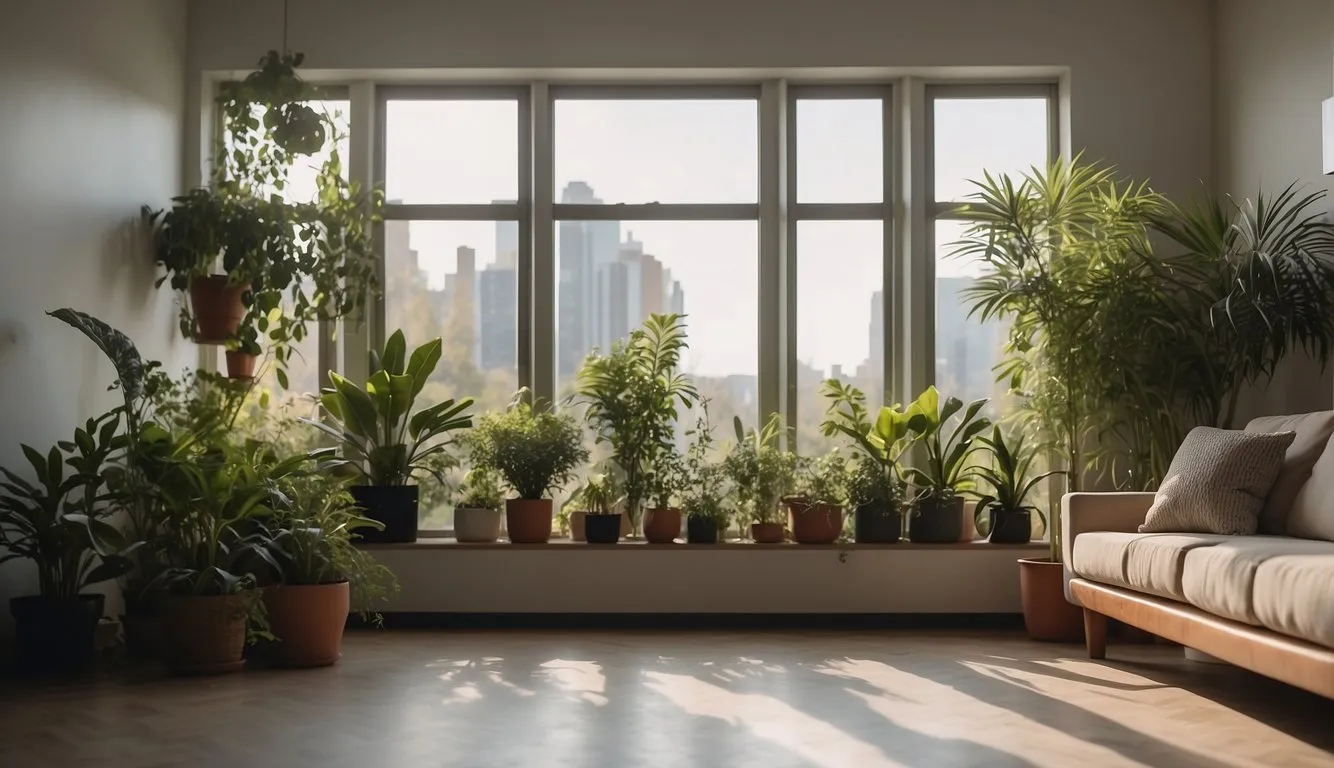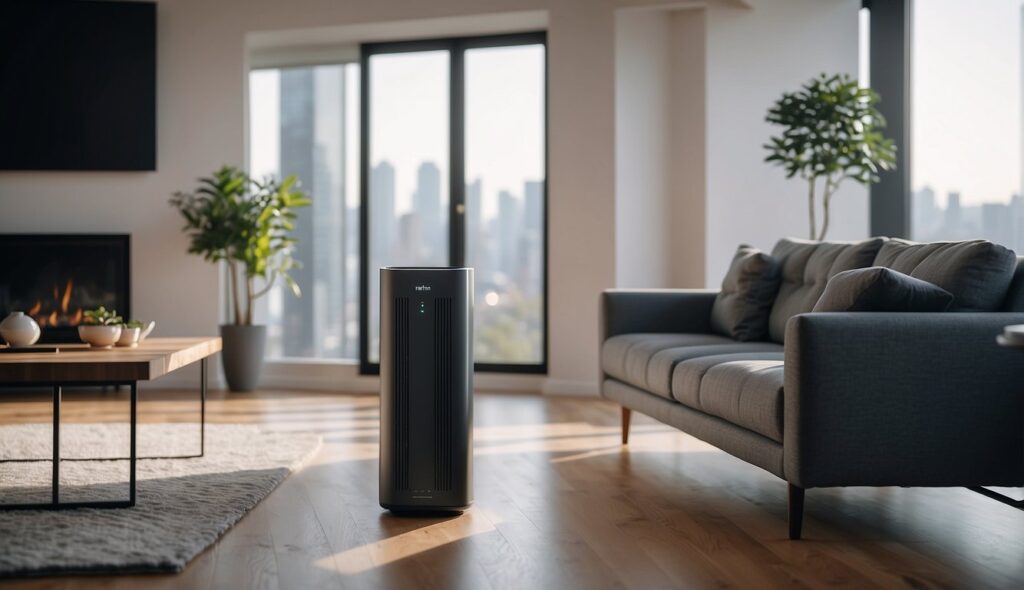Indoor air quality is a crucial aspect of our daily lives, yet it is often overlooked. Poor air quality can lead to respiratory issues, allergies, and other health problems. Fortunately, there are several ways to improve indoor air quality, including air purifiers, ventilation, and other practical tips.

Understanding air quality is the first step in improving it. Indoor air quality can be affected by several factors, including outdoor air pollution, indoor pollutants such as dust and pet dander, and inadequate ventilation. It is important to identify the sources of indoor air pollution and take steps to mitigate them.
Improving indoor air quality can be achieved through several methods. Air purifiers are an effective way to remove harmful particles from the air, while proper ventilation can help circulate fresh air throughout your home. Additionally, practical tips such as removing shoes before entering your home and regularly cleaning your carpets and upholstery can also help improve air quality.
Table of Contents
Key Takeaways
- Understanding the sources of indoor air pollution is crucial for improving air quality.
- Air purifiers and proper ventilation are effective methods for removing harmful particles from the air.
- Practical tips such as removing shoes before entering your home and regularly cleaning your carpets and upholstery can also help improve air quality.
Understanding Air Quality
When it comes to indoor air quality, it’s important to understand the common pollutants that can affect our health. By identifying the sources of indoor pollution and the health implications of exposure, we can take steps to improve the air quality in our homes and workplaces.
Common Pollutants
Some common indoor pollutants include dust, pollen, mold, volatile organic compounds (VOCs), carbon monoxide, dander, and allergens. These pollutants can come from a variety of sources, including cleaning products, building materials, and outdoor air pollution that enters the building.
Sources of Indoor Pollution
Indoor air pollutants can come from a variety of sources, including building materials, furniture, and household products. For example, formaldehyde is a common indoor pollutant that can be found in building materials like insulation and particleboard. VOCs, which can be emitted by cleaning products, paints, and solvents, can also contribute to poor indoor air quality.
Health Implications
Exposure to indoor air pollutants can have a range of health implications, from respiratory problems to cancer and heart disease. Radon, a naturally occurring gas that can enter buildings through cracks in the foundation, is a known carcinogen that can increase the risk of lung cancer. Exposure to nitrogen dioxide, ozone, and particle pollution can also have negative health effects.
Overall, it’s important to be aware of the sources of indoor air pollution and take steps to improve indoor air quality. This can include using air purifiers, improving ventilation, and minimizing the use of products that emit VOCs. By taking these steps, we can create a healthier indoor environment for ourselves and our families.
Improving Indoor Air
Indoor air quality is important for our health and well-being. Polluted indoor air can cause respiratory problems, allergies, and other health issues. To improve indoor air quality, we need to consider three main strategies: filtration and purification, ventilation strategies, and controlling humidity.
Filtration and Purification
One of the most effective ways to improve indoor air quality is by using air purifiers and filters. HEPA filters are the gold standard when it comes to air purification. They can remove 99.97% of particles as small as 0.3 microns. HVAC filters and furnace filters are also effective in filtering out pollutants such as dust, pollen, and pet dander. We can also use portable air purifiers with HEPA filters to clean the air in specific rooms.
Ventilation Strategies
Proper ventilation is essential for improving indoor air quality. We can improve ventilation by opening windows and doors to let fresh air in. We can also use exhaust fans in bathrooms and kitchens to remove moisture and pollutants. Mechanical ventilation systems can also be installed to improve airflow and air quality.
Controlling Humidity
Controlling humidity levels is important for preventing mold growth and improving indoor air quality. High humidity levels can promote the growth of mold, which can cause respiratory problems and allergies. We can use dehumidifiers to reduce humidity levels in our homes. Ideally, indoor humidity levels should be between 30-50%.
By following these strategies, we can improve indoor air quality and promote a healthy living environment. Proper ventilation, filtration, and humidity control are essential for maintaining good indoor air quality.
Mitigating Specific Risks

Indoor air quality can be compromised by various factors, including allergens, infectious diseases, and chemical exposures. Here are some tips to mitigate these specific risks.
Allergies and Asthma
Allergens such as dust mites, pet dander, and pollen can trigger allergies and asthma symptoms. To reduce exposure to these allergens, we recommend the following:
- Use air purifiers with HEPA filters to trap airborne allergens.
- Vacuum carpets and upholstery regularly using a vacuum cleaner with a HEPA filter.
- Wash bedding in hot water at least once a week to kill dust mites.
- Keep pets out of bedrooms and off of upholstered furniture.
- Use hypoallergenic bedding and pillowcases.
Infectious Diseases
Indoor air can also be a source of infectious diseases, including COVID-19. To reduce the risk of infection, we recommend the following:
- Increase ventilation by opening windows or using mechanical ventilation systems.
- Use air purifiers with HEPA filters to capture airborne viruses.
- Practice good hygiene, including frequent hand washing and wearing masks in public indoor spaces.
- Maintain a distance of at least six feet from others, especially in poorly ventilated areas.
Chemical Exposures
Chemicals from paints, cleaning products, and tobacco smoke can also compromise indoor air quality. To reduce exposure to these chemicals, we recommend the following:
- Use low-VOC (volatile organic compound) paints and cleaning products.
- Avoid smoking indoors and limit exposure to secondhand smoke.
- Use natural air fresheners such as essential oils instead of chemical-based air fresheners.
- Ventilate the room when using household cleaners and disinfectants.
By taking these steps, we can reduce our exposure to specific risks and improve indoor air quality.
Practical Tips for Homeowners
Indoor air quality is important for our health, comfort, and well-being. Poor indoor air quality can lead to various health problems, including allergies, asthma, and respiratory infections. As homeowners, we can take several practical steps to improve indoor air quality. Here are some tips that can help:
Choosing the Right Products
When choosing appliances, furniture, cleaning products, or any other household products, we should look for products that are low in volatile organic compounds (VOCs). VOCs are chemicals that can evaporate into the air and cause indoor air pollution. We should also choose products that are labeled as eco-friendly or green. These products are designed to be safer for both our health and the environment.
Regular Maintenance
Regular maintenance of our appliances, fans, vacuum, and other cleaning supplies is essential to keep them in good working condition and prevent them from releasing dirt, dust, or other pollutants into the air. We should also change our air filters regularly to keep our HVAC system running efficiently and reduce the amount of dust and dirt in the air.
Lifestyle Adjustments
Our lifestyle habits can also affect indoor air quality. For example, we should avoid smoking indoors or using gas stoves without proper ventilation. We should also avoid burning candles or incense, which can release harmful chemicals into the air. We can also reduce the amount of dust in our homes by regularly vacuuming, dusting, and washing our bedding and upholstery. Houseplants are also a great way to purify the air naturally.
In addition to these tips, there are other ways to improve indoor air quality, such as using UV lights or caulk to seal cracks and leaks. However, these methods require professional installation and may not be necessary for every home. By following these practical tips, we can create a healthier and more comfortable indoor environment for ourselves and our families.
Emerging Technologies and Research

We understand that indoor air purification is a crucial aspect of maintaining a healthy indoor environment. With the advancements in technology, there are now more options than ever before to improve the air quality in our homes and offices.
One emerging technology is the use of HEPA filters. These filters are designed to trap small particles, such as pollen and dust, from the air. They are especially useful for those with allergies or respiratory issues. HEPA filters can be found in air purifiers, vacuum cleaners, and even in some air conditioning systems.
Another area of research is the use of plants to purify the air. NASA has conducted studies on the ability of plants to remove toxins from the air, and many indoor plants have been shown to be effective at improving air quality. In addition to their air-purifying properties, plants can also add a decorative touch to any room.
It is important to note that some common household items can actually contribute to poor air quality. For example, carpets and upholstery can trap dust and allergens, while wood-burning stoves and fireplaces can release smoke and other pollutants into the air. Smoking indoors can also have a negative impact on air quality.
To improve indoor air quality, we recommend regularly opening windows to let in fresh air, especially after cooking or cleaning. It is also important to regularly clean and maintain air conditioning systems and carbon monoxide detectors. If you have a wood-burning stove or fireplace, make sure to have it inspected and cleaned regularly to prevent the buildup of creosote and other pollutants.
In conclusion, by staying informed about emerging technologies and conducting regular maintenance on household items, we can take steps to improve indoor air quality and promote a healthy living environment.
Frequently Asked Questions
What natural methods effectively improve indoor air quality?
There are several natural methods that can be used to improve indoor air quality. One of the most effective ways is to use indoor plants. Plants can absorb pollutants from the air and release oxygen, making the air cleaner and fresher. Some of the best plants for air purification include the spider plant, peace lily, and English ivy. Another natural method is to open windows and doors to improve ventilation. This allows fresh air to circulate through the space and flush out stale air and pollutants.
What are the top methods to reduce dust in the air at home?
Dust can be a major contributor to poor indoor air quality, so it’s important to take steps to reduce it. One effective method is to use a vacuum cleaner with a HEPA filter to remove dust from carpets and floors. Another method is to dust surfaces regularly with a damp cloth or microfiber cloth. It’s also important to change air filters regularly to prevent dust buildup in the HVAC system.
What steps can I take to eliminate smoke from indoor air?
Smoke from cigarettes, candles, or cooking can be a major contributor to poor indoor air quality. To eliminate smoke, it’s important to ventilate the space by opening windows and doors or using exhaust fans. Air purifiers with activated carbon filters can also help to remove smoke particles from the air. Additionally, it’s important to avoid smoking indoors and to use natural alternatives to scented candles and air fresheners.
How can I enhance the effectiveness of my air purifier?
Air purifiers can be a valuable tool for improving indoor air quality, but their effectiveness can be enhanced by taking a few simple steps. First, it’s important to choose the right size air purifier for the space. An air purifier that is too small won’t be able to effectively filter the air. Second, it’s important to place the air purifier in the right location. Air purifiers should be placed in areas where air circulates freely, such as near doors or windows. Finally, it’s important to change the air filter regularly to ensure that the air purifier is working at peak efficiency.
What are the best practices for maintaining clean air in the home?
Maintaining clean air in the home requires a few best practices. First, it’s important to keep the home clean and free of clutter. Dust and other pollutants can accumulate in cluttered areas, so it’s important to keep surfaces clean and tidy. Second, it’s important to change air filters regularly to prevent dust buildup in the HVAC system. Third, it’s important to ventilate the space by opening windows and doors or using exhaust fans. Finally, it’s important to use natural cleaning products and avoid using products that contain harsh chemicals.
What strategies can be employed to quickly purify air in a room?
There are several strategies that can be employed to quickly purify air in a room. One of the most effective is to use an air purifier with a HEPA filter. This can remove up to 99.97% of airborne particles, including dust, pollen, and pet dander. Another strategy is to use natural air purifiers, such as activated charcoal or bamboo charcoal. These can absorb pollutants from the air and release fresh, clean air. Finally, opening windows and doors can quickly improve air quality by allowing fresh air to circulate through the space.


